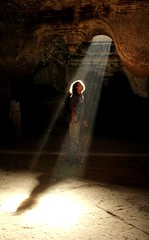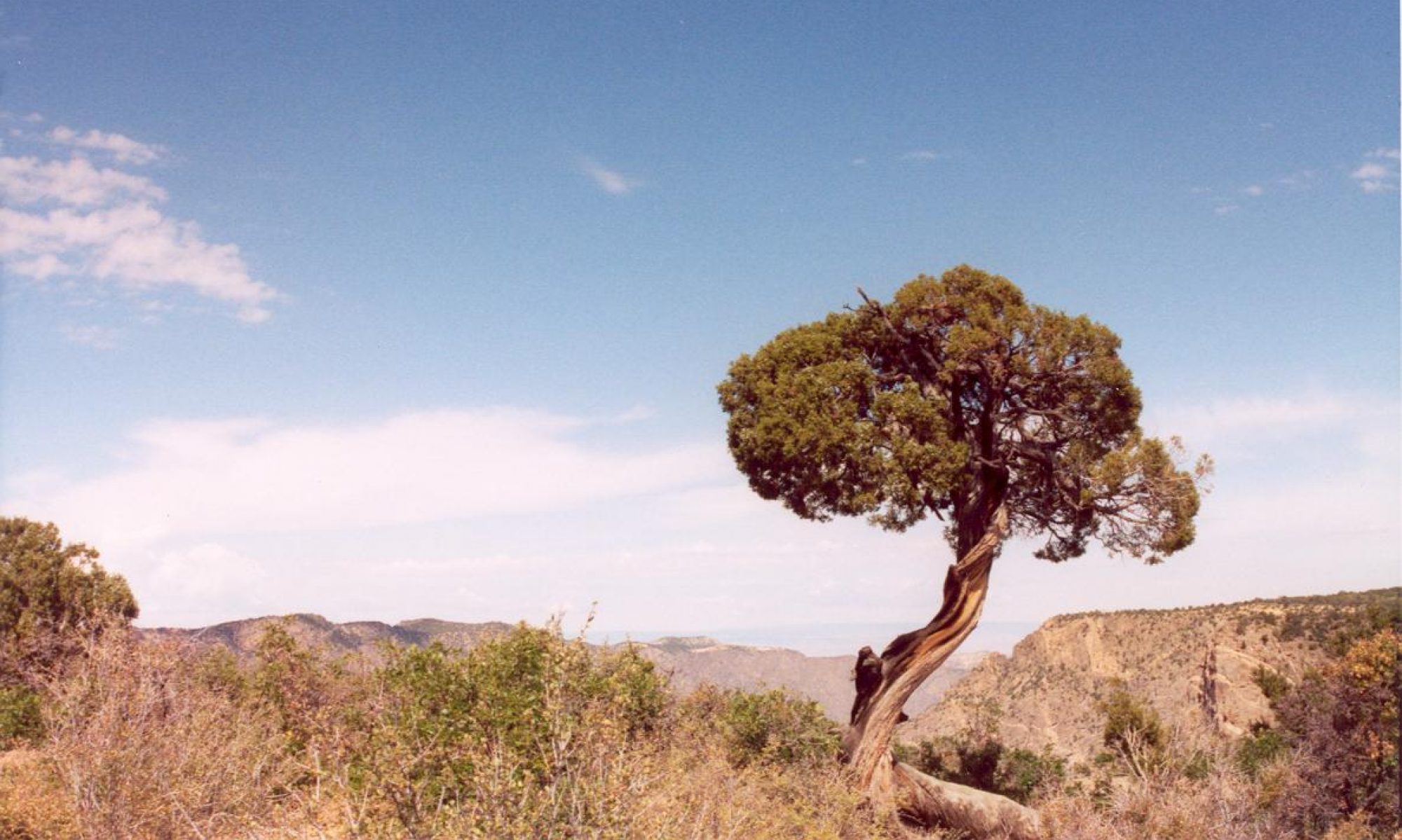 It all started with dread.
It all started with dread.
The last week or so, my classes have been covering material that I made PowerPoint slideshows for several years ago. While at the time, I put in lots of images and even embedded some video, I found myself dreading to give those presentations to my classes. I started pondering whether there wasn't a better way to utilize slideshows than what I was doing. I became discontent with my presentations
 As if the heavens could hear me, wisdom rained down upon me.
As if the heavens could hear me, wisdom rained down upon me.
Wisdom Bit #1: This fall, I happened upon Lawrence Lessig's talk on copyright at the TED conference. While the subject matter was interesting, I was enthralled (& engaged) by his simple use of visuals and high-contrast text. It made me want to go design my own presentation right then and there (it was a pretty busy time for me, so I didn't). As I became discontent with my presentations, my thoughts went back to his presentation.
Wisdom Bit #2: On a tip from Wes Fryer on his blog, I've subscribed to the Practical Principals podcast. In the first installment I was able to catch, Scott Elias discussed a presentation he gave on how to give engaging presentations. In the show notes, a link was provided to his presentation. I checked that out, and liked what I saw. The wheels were turning...
Wisdom Bit #3: Wes Fryer wrote a post discussing digital storytelling and dual-coding theory. Essentially, dual-coding theory states that when a speaker reads information off of a slide, very often the audience can become overwhelmed because there are two images to pay attention to (the speaker and the projected text). I found this very interesting, as I had previously been under the assumption that reading and projecting the text was helpful to students, as it provided both a visual and auditory pathway for the information. It's funny what information we believe that isn't really true.
Wisdom Bit #4: Clay Burell shared a presentation he gave and also wrote a bit on good design in presentations to boot. I especially liked his tip to include a "narrative thread" in presentations. It provides a something for people to grab onto, and combined with slides with relevant images (and very little text), people have to listen to hear the story.
Wisdom Bit #5: At the end of Clay's post, he provided a link to Dan Meyer's blog post on how to present. He pretty much reiterated what I had already heard and read from Scott, Wes, and Clay; but it was an excellently written post with great examples. I think what I took away most from this post was his statement: "If I can look at your slidedeck and determine the full content of your presentation, it's carrying too much information."
 Finally, I had direction.
Finally, I had direction.
I think what struck me most about this process went far beyond my integration of a new and improved method. The online network that provided the wisdom is the big story here. Though no one whose wisdom was included in this post put their content online with the specific thought of helping me escape the doldrums of antiquated presentations, the simple task of accessing distant knowledge is pretty amazing in itself. The sources of my wisdom were located in California, Oklahoma, Colorado, Missouri, Korea, and California again. It was totally asynchronous, and exactly what I needed. I don't have a well-developed edtech network yet, but just because I can't tweet a question and get back 50 responses yet doesn't mean I can't take advantage of the network.
 Thanks, network. You're the best!
Thanks, network. You're the best!
Stay tuned. I'll post my old presentation compared to the new one.
Photo credits: Medo/Fear by xaimex, BLESSINGS FROM THE SKY by dharmesh, Map and Compass by Inky Bob, and Be Positive by José Miguel Serrano
